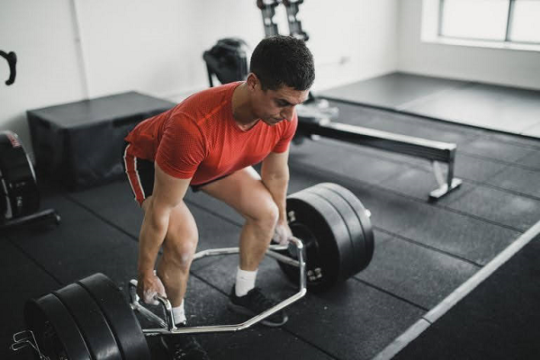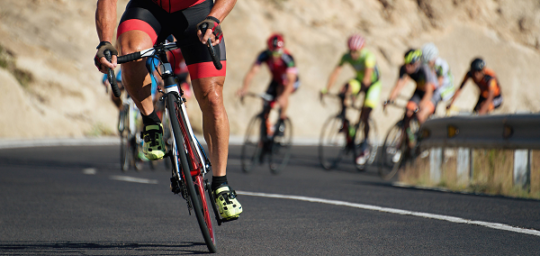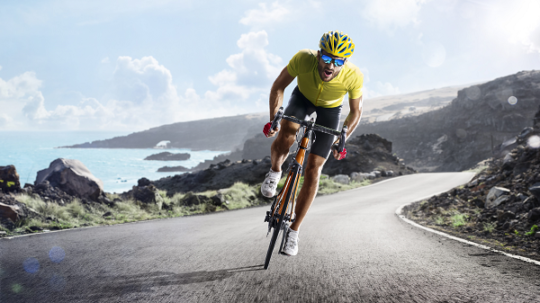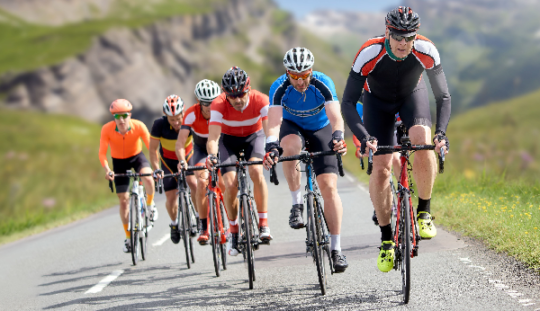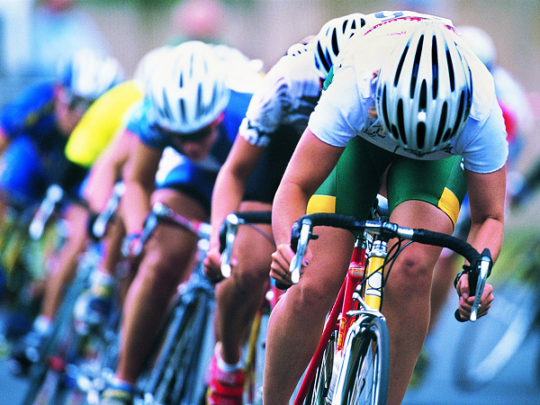Athletes train at high altitudes to improve oxygen efficiency, to increase stamina and endurance, and decrease feelings of fatigue, muscle pain and weakness. Altitude training can be done in your local area by using special machines that simulate the oxygen levels at high altitudes.
What benefits does altitude training provide in regards to sports performance?
Dr. Jan Kasprowicz: Altitude training’s been used for quite a bit of time with athletes, especially with cyclists. That’s why a lot of our athletes, our Olympic athletes, train in Colorado, because it’s a higher elevation. I personally work with a good amount of cyclists, and they go over to Italy and train over in Italy, because there’s high altitude there as well. Bigger mountains, thinner air, forces your body to actually create more red blood cells. There’s also machines out there too, that can actually mimic being at high altitudes.
The actual performance benefit is that it helps you increase your VO2 max and your lactate threshold. This way you actually utilize oxygen much more efficiently, build a bigger engine, and basically don’t feel that burn as much in your muscles when you’re actually training. It also increases your power output and speed, so you’re going to be able to run faster, going to be able to ride your bike in a higher gear, and enhances your endurance and stamina as well. This way, you’re not going to feel fatigued when you’re running a marathon or even a longer distance event such as Ironman Triathlon.
It reduces your recovery time, which is very important too. Everybody thinks that you gain all your performance gains and your training gains when you’re actually working out, but it’s not true. It’s actually when you’re recovering. Including some type of hypoxic or altitude training as a recovery tool is imperative. It also increases capillarization, which is increase of the density and length of the capillaries, which will allow the capillaries to increase more oxygen delivered to your muscle tissue as well and boost mitochondrial enzymes, allowing more efficient use of oxygen for energy production when you train and also compete.
It decreases your heart rate and your blood pressure, so it’s also got health benefits to it. It increases your production and release of human growth hormone. It’s also known as the hormone of the fat hormone. It also helps stimulate fat burning metabolism, so this is where make you leaner.
Do athletes have to travel to certain elevations to train, or is there high altitude training equipment available?
Dr. Jan Kasprowicz: By all means, athletes can and they do travel for months at a time to go to different high altitude settings. It’s either down in South America, over in Europe, or actually in Colorado. There are machines out there as well. You can actually build your own altitude tent and sleep in there at night. Personally, what I use is a machine called a Hypoxico, which can actually mimic training at elevations up to 21,000 feet. The Hypoxico reduces the oxygen saturation in the air that you breathe. It is not one of those nonsense elevation masks that a lot of people wear, which actually just have these two little restrictive filters in the front. That doesn’t do altitude training. All that does is restrict air into your lungs. It does do something. It actually strengthens up your muscles which allow you to breath, but it by no means does any type of altitude training.
We have cyclists and runners that use the Hypoxico while training on the treadmill or on a stationary bike. Personally, at home, I have a Hypoxico. My wife and I were planning on going to Patagonia in December and we’re going to be on an elevation of about 6,000 feet. We plan on being pretty active. What we do is we actually take turns. We use it every single day for about an hour a day. We do intervals on it. We use it for five minutes. We take it off for five minutes. Put the mask on for five minutes. We gradually increase the elevation that we’re working with. This way, it’s going to allow us to be more efficient with using less oxygen. It’s also going to increase our lactate threshold, so this way we’re not going to be as tired as somebody who is not altitude acclimated.
How long does an athlete have to spend training at a higher altitude to reap the benefits?
Dr. Jan Kasprowicz: We recommend a minimum of four weeks of hypoxic training. Anything less than that, you’re really not going to get the full sports performance benefits. You’re going to get the health benefits. Four weeks is a minimum. By training at altitude, athletes are going to be breathing in thinner air with less oxygen concentration, which forces the body to produce more red blood cells. That’s where you get your performance benefit, the increase in the amount of red blood cells. Within the first 7 to 10 days, there’s pretty much little to no difference in the amount of red blood cells produced in the body. They’re not going to see any sports performance benefits at all. For the next three weeks after that, though, your body starts producing more of these red blood cells, but you’re not really going to notice those performance benefits. If you do notice anything, it’s going to be minimal. After the fourth week, your body’s developed a significant amount more of those red blood cells, and that’s where you really see the increase in performance.
How long do altitude training benefits last?
Dr. Jan Kasprowicz: They’re not permanent, by no means, but also they’re not that temporary either. They usually last anywhere from three to four weeks afterwards. That’s why I recommend to our athletes, who do come back from Colorado, or they come back from Europe from training, to continue doing some kind of hypoxic or altitude training with us. This way, it doesn’t just last the three weeks, and then you don’t have the adaptation process that you received from the altitude training. Then, in regards to that, you don’t need to do it on a daily basis, but you do want to use it while you’re doing your event. If you’re a cyclist, and you went to Colorado, and you stayed there for a month, and you’re doing altitude training, those effects usually will wear off after about three weeks. If you actually continue with some type of maintenance where you’re actually getting on a stationary bike hooked up to a Hypoxico altitude simulator, do that probably three to four times a week for an hour or two hours, you’re going to be able to maintain a lot of those gains that you received.
Besides sports performance, does high altitude training benefit one’s overall health?
Dr. Jan Kasprowicz: Actually, it does. There’s a lot of evidence for hypoxic training with health and wellness. For decades, doctors and epidemiologists, which are public health professionals who investigate patterns and causes of different diseases, they both documented that populations living at higher altitudes have significant decreases in occurrence of nearly every chronic disease known to man. Actually, I think it was in 2013, a study found that Americans that lived at sea level are four to five times more likely to be obese than those living at high altitude communities. Actually, those stats remain consistent even after controlling for other important factors, like lifestyle, exercise level, socioeconomic status, and also family history.
Colorado is very interesting, because Colorado’s the leanest state in the US. It’s the only state that actually has an obesity rate below 20%. The stats are not coincidence, but are, instead, a result of the increased energy expenditure required to adapt to these thin air environments. Your body is actually burning more calories just to sustain itself at these higher altitudes. These studies also showed that altitude affects the way we experience hunger and satiety, which is very important for weight loss. Satiety is your feeling of fullness. These studies actually resulted with findings that showed that people exposed to altitudes felt less hungry, because levels of leptin, which is their satiety hormone, surged while ghrelin, which is their hunger hormone, remained the same. They felt fuller at higher altitudes.
If you are interested in speaking with Dr. Jan Kasprowitz, visit www.chiropracticandsportsrecovery.com, or call 917-748-2902 to schedule an appointment.
Click here to receive more information & to schedule your assessment

